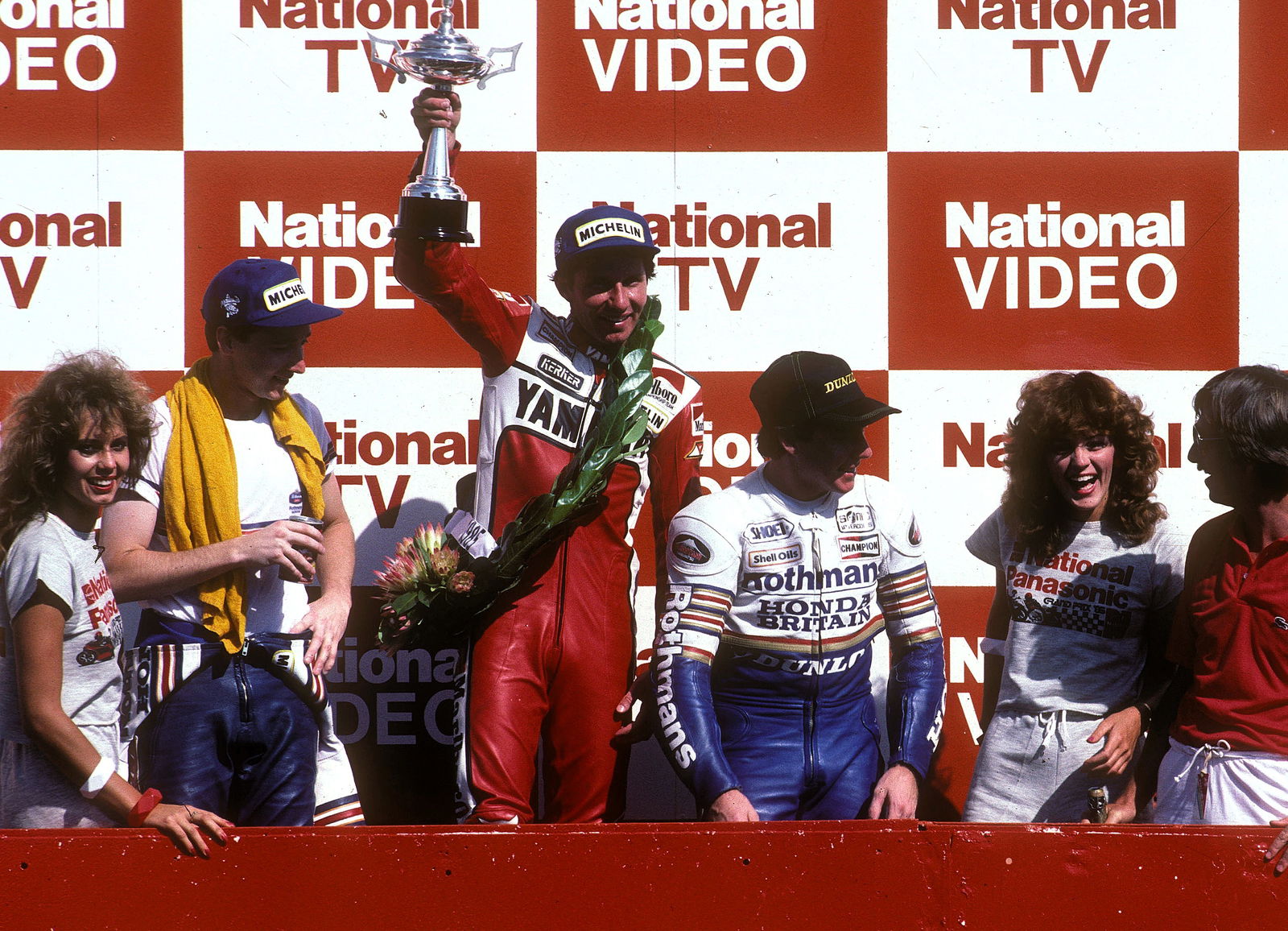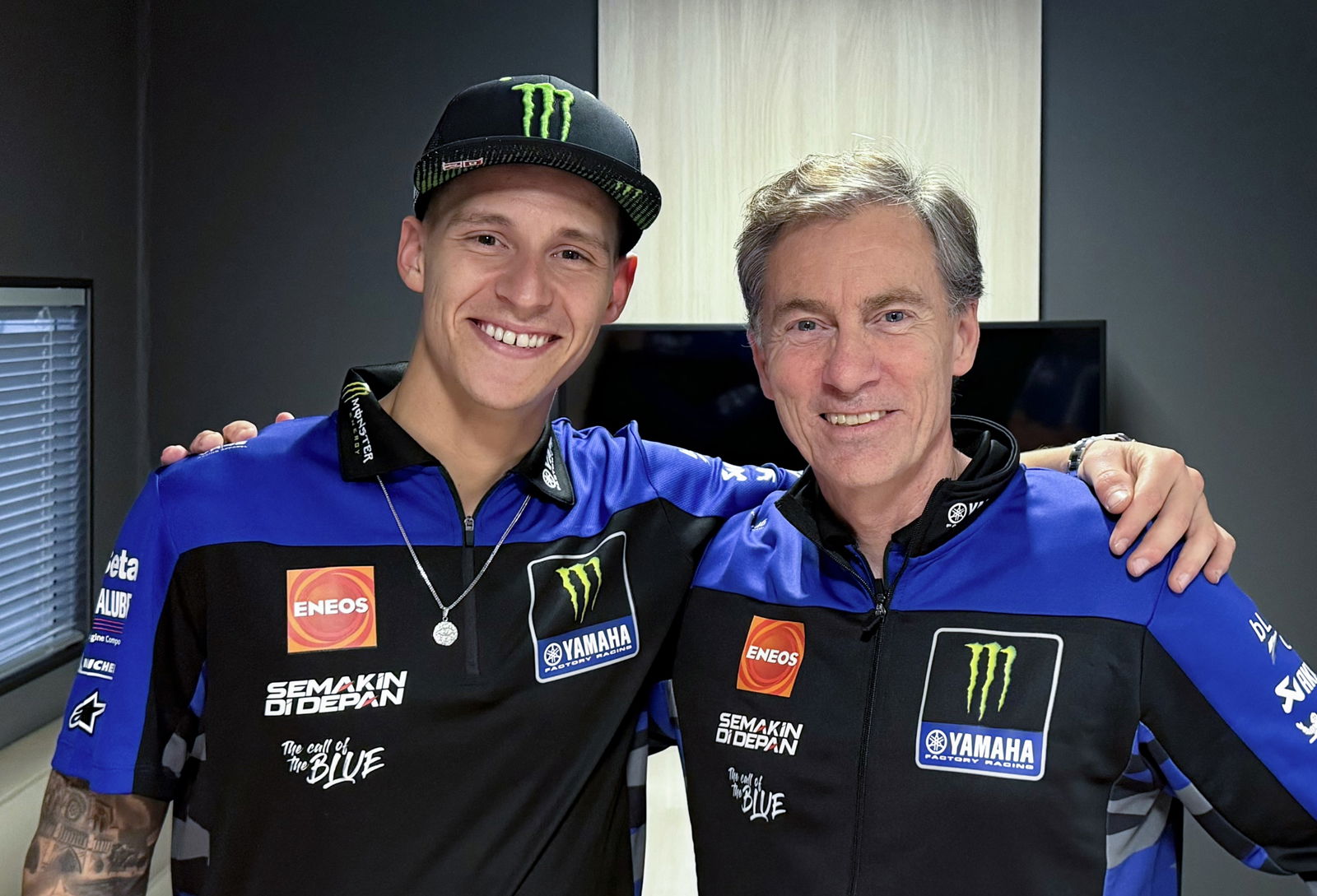Herve Poncharal on Mandalika 2023: "I felt like a soldier hiding from the front line!"
"The weirdest feeling" - Herve Poncharal’s record run of MotoGP attendance finally came to an end last season. This is how it felt for the Frenchman to stay at home for the first time in almost 40 years.

1985. The year that Marty McFly went ‘Back to the Future’, the Live Aid charity concerts were held in Philadelphia and London, and Freddie Spencer completed a unique 250 and 500cc title double.
It was also the last time a motorcycle grand prix took place without Herve Poncharal at the track. The start of a record run that finally came to an end, almost 40 years later, at Mandalika last October.
Having promoted Nicolas Goyon to the role of Tech3 team manager at the start of last season, Poncharal predicted his perfect Grand Prix attendance would come to an end at some stage.
But it still took until round 15 of last season and, ultimately, the cause was racing-related.
The Frenchman remained at the team's Bormes Les Mimosas base partly to conclude a new sponsorship deal with Motul, after the surprise news that Elf was not renewing its contract.
The result was that Poncharal tuned in at home in the early hours of Friday, Saturday and Sunday for the Mandalika, Phillip Island and Buriram triple header, watching Tech3 from the outside, rather than being at the centre of the action.
“I don’t know exactly how many races I’ve been to since 1985,” Poncharal said, during an exclusive interview with Crash.net.
“Paul Butler [who retired as MotoGP Race Director at the end of 2011] was keeping track and always telling me ‘You have the record of consecutive races, by far’. And that was before he left!
“You can look at these kinds of statistics either way, they can sound impressive from one side but really, they are worth nothing! Nonetheless, for me, it was a tough decision not to go to those races.
“But I’d received an email during the night, Saturday to Sunday, at the Indian Grand Prix from Total-Elf telling me, ‘we are out’. It was a huge shock because I thought they were going to carry on and everything seemed ready to extend the contract.
“I went straight to the next race in Japan, then I got in contact with [points to 'Motul' on his shirt]. And as the discussions progressed, I decided to fly home and skip the next Indonesia-Australia-Thailand triple header.
“So there was a good reason to be absent and I have to admit when I saw all the travel my team had to do just to get to Mandalika, I didn’t miss that part too much: Drive to Nice, fly to Amsterdam, 6-7 hours wait, fly to Singapore, 3 hours wait, fly to Jakarta, 4 hours wait, fly to Lombok... It was around 40 hours by the time they arrived at their hotel rooms!
“But honestly, I was not happy being at home. You want to be there. Even if my team is now big enough to run without me. I have Nico Goyon as a team manager. We have a lot of support from our manufacturer [KTM]. I know everybody in IRTA, Dorna, so I can work from home. And if there is a problem, I’m always at the other end of the phone.
“But it was the weirdest feeling. I felt like a soldier hiding from the front line and avoiding the battle. Because my team were there, and I was not with them.
“All my life I've been trying to be at the front. And when I saw my fellow team managers or team owners in their pit box, congratulating their riders and team, or angry after a crash, I thought, ‘And I’m here watching on my sofa’.
“Carmelo [Ezpeleta] called me and said, ‘Herve, we miss you! Why are you not here?’ I wanted to be there like crazy.
“It's important to be with your ‘troops’. To continue the analogies, if the boat is sinking, the last one to leave is the captain. The boat wasn’t sinking but I was not even on it!
“So the feeling wasn’t good. Also, Dani [Holgado] was leading the Moto3 championship but losing ground, making some mistakes and he got injured in Australia. I thought, ‘I should be there. Maybe I would have said something useful’.
“I didn't want to call the team and disturb them all the time. But I have to say those races were probably the weeks when I slept the least in my entire life!
“I was following everything - Moto3 and MotoGP - from FP1 until the end of the races on Sunday, but then also awake during the normal European daytime.
“Anyway, it was an experience - that I didn't really enjoy - but nobody is irreplaceable. And certainly, I’m not.
“The good thing is I managed to convince my friends from Motul to come back with us, which is helping a lot for the team’s future because it’s almost a four-year deal. So it was worth it.”
You mentioned the soldier analogy, were you still wearing your 'uniform' at home?
“[Laughs] No… I have to be honest. I’m not quite that crazy! Also, because I was just watching on my own.
“But I like the question - you know I could almost do it! If there had been a camera, I would have done it!”

‘In 1985 it was almost impossible to know the race result’
Back in 1985, it wasn’t normally possible to watch races on TV, a far cry from the current live coverage of every track session.
“When we created IRTA in 1986, we wanted our sport to grow. And to grow you need to show it to more people,” said Poncharal, who is also president of teams' association IRTA.
“The only media to do that at the time was television. But we had almost zero TV coverage. So it's one of the major things that has changed since the mid-‘80s.
“In France, there was nothing on the TV back then. It was almost impossible even to know the race results on a Sunday.
“L’Equipe [French sports paper] would sometimes have it the following day, but sometimes we had to wait for Thursday when Moto Journal and Moto Revue were published.
“Some of my friends were photographers and to get pictures back from the track they would drive or ride to an airport and give the film reels to Air France pilots they knew. Then somebody would meet the pilots in Paris to pick them up and develop them!
“For the journalists, they either needed to find a Telex or make a phone call back to their office and dictate their stories to get them published quickly. But even that was not easy because phone connections were not like now and it was so expensive.
“Otherwise, they would have to file their reports after they arrived back home. So sometimes we only knew the full race results and what had happened on a Thursday. A completely different world!
“In the pits, we watch the same live TV images as the fans, so it was really only the commentary side that was new for me at home. I watched Canal+, which is the French MotoGP broadcaster, and also the Dorna feed. I think they are doing a good job, honestly.”


